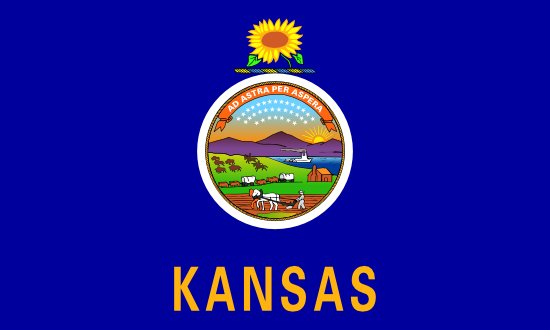
Kansas
- Statehood Year:
- 1861
- Capital:
- Topeka
- Largest Cities:
- Wichita, Overland Park, Kansas City
- Abbreviation:
- KS
Kansas is a state in the Midwest region of the United States, known for the Flint Hills, prairies, and wheat fields. It has a population of 2,989,710, making it the 34th most populated state in the country. The capital city is Topeka. Kansas has a agricultural strength with aviation manufacturing focus.